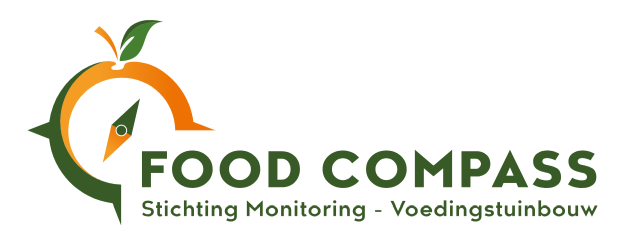



This portal provides methods to analyse the concentration levels of substance residues found on the food samples recorded by Food Compass and analyse the potential health risk associated with consumption of fruits and vegetables with such residue concentration levels.
More specifically, users can evaluate the substance residue concentration levels of Food Compass samples (both single samples and collections/batches of samples) and 1) compare these levels with legal requirements (e.g., testing for exceedance of MRLs or findings of so-called potentially genotoxic substances), 2) compare these levels with non-statutory retail requirements, and 3) evaluate the potential cumulative human health risk from combined exposure to multiple substances using the MCRA software. In addition, users can evaluate the trends of the substance residue concentration levels and their associated impact on human health over time using the batch comparison analysis.
The portal allows three types of analyses: single-sample analysis of substance residues found on individual samples, batch analysis to analyse to substance residues found in batches of samples, and batch comparisons for comparing the results of different batch analyses. In the single-sample analyses, the concentration levels of individual food samples can be analysed in detail. In the batch analyses, batches of multiple samples collected during a specific time-window (e.g., a year) are analysed. In the batch comparison analysis, the results of multiple batch analyses can be combined in an overall report. This functionality allows the user to perform, for instance, time trend analysis by selecting batches of multiple years.
A single sample analysis consists of the following parts:
For probabilistic assessment of cumulative exposure and risk from the sample food, the analysis will first identify the health effects and assessment groups (AGs) associated with the substances in the sample. For each of these assessment groups, the cumulative exposure and risk for a pre-selectted population (currently: Dutch children) is calculated for consumption of only the food sampled food with the observed residue levels. The cumulative exposure assessment is performed largely based on the EC Tier 2 as described in van Klaveren et al. (2019), but some minor modifications to be fit for analysis of a single sample. For the risk calculation, several preselected percentiles of the exposure distribution are compared to the ARfD valid at the sample date. This analysis will, for a chosen percentile, lead to as many conclusions about ARfD exceedance as there are identified AGs. The highest exceedance can be used as a summarising indicator for the sample.
A batch analysis consists of the following parts:
The batch analysis module lets the user select multiple batchtes and combines the overall results of the selected batches in one table and provides several visualisations for combined analysis of the deterministic indicators and the cumulative risk calculations.